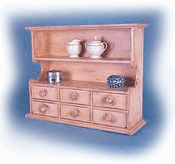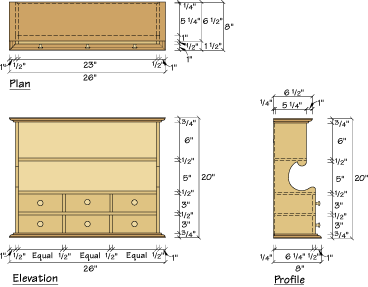
This clever little hutch will prove useful in more than one room of your house, but our reason for offering it to you is as a training piece on creating a simple but stunning antique finish.

A. The
edges of the drawers, and of the drawer opening are worn to show repeated
use.
B. Circular Wear Patters around the knob and on
the edges.
C. Mouse hole for a fun effect.
D. Sharp edges and corners are blunted with a
hammer after staining, and worn through after painting.
Distressing: Shown above are a few results of simple antiquing. The stained level of the finish shows through behind the paint, and the paint is worn in areas that would likely see use through the years. The antiquing was done with a grey 3M pad. The mouse hole was done with needle nose pliers.
